Filter by
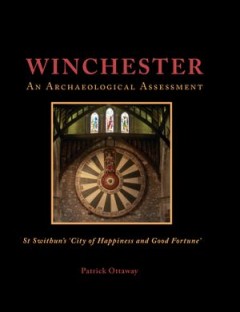
Winchester: An Archaeological Assessment Swithun's 'City of Happiness and Go…
This critical assessment of the archaeology of the historic city of Winchester and its immediate environs from earliest times to the present day is the first published comprehensive review of the archaeological resource for the city, which as seen many major programmes of archaeological investigation. There is evidence for activity and occupation in the Winchester area from the Palaeolithic per…
- Edition
- -
- ISBN/ISSN
- 9781789258943
- Collation
- -
- Series Title
- -
- Call Number
- -
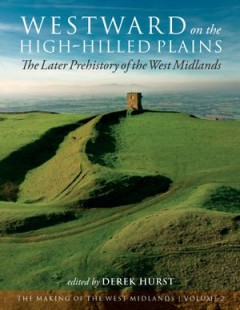
Westward on the High-Hilled Plains The Later Prehistory of the West Midlands
The West Midlands has struggled archaeologically to project a distinct regional identity, having largely been defined by reference to other areas with a stronger cultural identity and history, such as Wessex the South-West, and the North. Only occasionally has the West Midlands come to prominence, for instance in the middle Saxon period (viz. the kingdom of Mercia), or, much later, with rural s…
- Edition
- -
- ISBN/ISSN
- 9781789256512
- Collation
- -
- Series Title
- -
- Call Number
- -
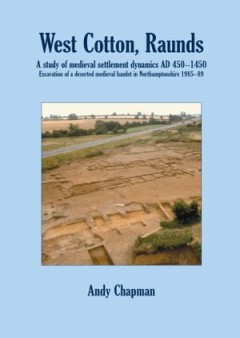
West Cotton, Raunds A Study of Medieval Settlement Dynamics AD 450-1450. Exc…
The open area excavation of nearly a half of the small deserted medieval hamlet of West Cotton, Raunds, Northamptonshire has revealed the dynamic processes of constant development in a way that has rarely been achieved on other comparable sites in England. Its origins have been seen to lie in the mid tenth-century plantation of a planned settlement based on regular one-acre plots, which occurre…
- Edition
- -
- ISBN/ISSN
- 9781842177587
- Collation
- -
- Series Title
- -
- Call Number
- -
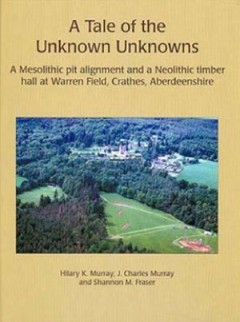
A Tale of the Unknown Unknowns A Mesolithic Pit Alignment and a Neolithic Ti…
The site of Warren Field in Scotland revealed two unusual and enigmatic features; an alignment of pits and a large, rectangular feature interpreted as a timber building. Excavations confirmed that the timber structure was an early Neolithic building and that the pits had been in use from the Mesolithic. This report details the excavations and reveals that the hall was associated with the storag…
- Edition
- -
- ISBN/ISSN
- 9780000000903
- Collation
- -
- Series Title
- -
- Call Number
- -
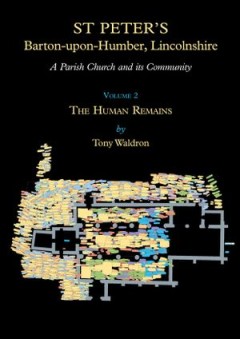
St Peter's, Barton-upon-Humber, Lincolnshire - A Parish Church and its Commun…
The excavations at St Peter's church, Barton-upon-Humber, between 1978 and 1984 have yielded the largest collection of human remains in the UK, dating from the late tenth century to the mid-nineteenth. The twin aims of the project were to understand the architectural history and setting of this complex, multi-period building (Volume 1), and to recover a substantial sample of the population for …
- Edition
- -
- ISBN/ISSN
- 9781842172834
- Collation
- -
- Series Title
- -
- Call Number
- -

Somerset's Peatland Archaeology Managing and Investigating a Fragile Resource
The Somerset Levels and Moors are part of a series of coastal floodplains that fringe both sides of the Severn Estuary. These areas have similar Holocene environmental histories and contain a wealth of waterlogged archaeological landscapes and discrete monuments. The importance of Somerset's prehistoric wetland heritage is shown by the fact that twenty-five percent of all the prehistoric waterl…
- Edition
- -
- ISBN/ISSN
- 9781789256550
- Collation
- -
- Series Title
- -
- Call Number
- -

The Social and Cultural Contexts of Historic Writing Practices
Writing is not just a set of systems for transcribing language and communicating meaning, but an important element of human practice, deeply embedded in the cultures where it is present and fundamentally interconnected with all other aspects of human life. The Social and Cultural Contexts of Historic Writing Practices explores these relationships in a number of different cultural contexts and f…
- Edition
- -
- ISBN/ISSN
- 9781789254815
- Collation
- -
- Series Title
- -
- Call Number
- -
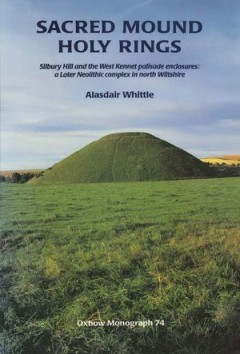
Sacred Mound, Holy Rings Silbury Hill and the West Kennet Palisade
The excavations at Silbury Hill in the late 1960s were broadcast to the world on television and generated a huge amount of excitement, but until now have not been published. This report gives a full account of the excavation and discusses the archaeological and environmental evidence from the tunnel, the ditch section and the cuttings on the top of the mound, as well as the radiocarbon dates. N…
- Edition
- -
- ISBN/ISSN
- 9781789256475
- Collation
- -
- Series Title
- -
- Call Number
- -
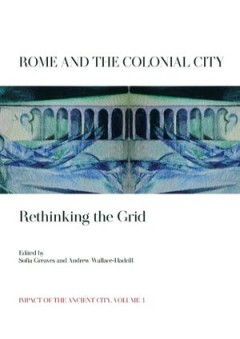
Rome and the Colonial City Rethinking the Grid
According to one narrative, that received almost canonical status a century ago with Francis Haverfield, the orthogonal grid was the most important development of ancient town planning, embodying values of civilization in contrast to barbarism, diffused in particular by hundreds of Roman colonial foundations, and its main legacy to subsequent urban development was the model of the grid city, sp…
- Edition
- -
- ISBN/ISSN
- 9781789257823
- Collation
- -
- Series Title
- -
- Call Number
- -
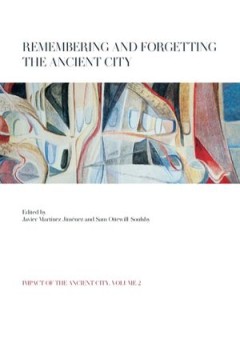
Remembering and Forgetting the Ancient City
The Greco-Roman world is identified in the modern mind by its cities. This includes both specific places such as Athens and Rome, but also an instantly recognizable style of urbanism wrought in marble and lived in by teeming tunic-clad crowds. Selective and misleading this vision may be, but it speaks to the continuing importance these ancient cities have had in the centuries that followed and …
- Edition
- -
- ISBN/ISSN
- 9781909254176
- Collation
- -
- Series Title
- -
- Call Number
- -
 Computer Science, Information & General Works
Computer Science, Information & General Works  Philosophy & Psychology
Philosophy & Psychology  Religion
Religion  Social Sciences
Social Sciences  Language
Language  Pure Science
Pure Science  Applied Sciences
Applied Sciences  Art & Recreation
Art & Recreation  Literature
Literature  History & Geography
History & Geography